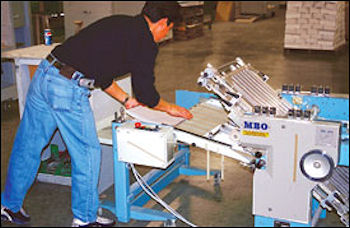Analyzing the Workplace
Gathering and Examining Evidence of MSDs
Once a decision has been made to initiate an ergonomics program, a necessary step is to gather information about musculoskeletal disorders (MSDs) to determine the scope and characteristics of the problem or potential problem.

MSDs are injuries or disorders that affect the human body's movement or musculoskeletal system (i.e., muscles, nerves, tendons, ligaments, joints, cartilage, or spinal discs).
- They are among the most common workplace injuries, affecting millions of people worldwide.
- They can result from various activities, including work, sports, and daily tasks.
Here's a brief overview of some common MSDs:
- Carpal Tunnel Syndrome: A condition caused by pressure on the median nerve within the wrist's carpal tunnel, leading to numbness, tingling, weakness, or muscle damage in the hand and fingers.
- Tendinitis: Inflammation or irritation of a tendon, the thick fibrous cords that attach muscle to bone, typically caused by repetitive movements or overuse. Common areas affected include the elbow, knee, shoulder, hip, and Achilles tendon.
- Epicondylitis: (Tennis Elbow/Golfer's Elbow) A type of tendinitis that affects the elbow's outer (lateral epicondylitis) or inner (medial epicondylitis) areas, often resulting from repetitive wrist and arm motions.
- Rotator Cuff Injuries: Injuries to the rotator cuff, a group of muscles and tendons that surround the shoulder joint, keeping the head of your upper arm bone firmly within the shallow socket of the shoulder. These injuries can range from tendinitis to tears, often caused by repetitive overhead actions.
- Back Injuries: Including lower back pain and herniated discs, these are among the most common MSDs, often resulting from heavy lifting, sudden movements, or prolonged sitting or standing in poor postures.
- Thoracic Outlet Syndrome: A group of disorders that occur when blood vessels or nerves in the space between the collarbone and the first rib (thoracic outlet) are compressed, leading to pain in the shoulders and neck and numbness in the fingers.
- De Quervain's Tenosynovitis: Affects the tendons on the thumb side of the wrist. It can cause pain and tenderness, especially when forming a fist, grasping or gripping something, or turning the wrist.
- Trigger Finger: Occurs when a finger or thumb gets stuck in a bent position and then straightens with a snap, like a trigger being pulled and released. It results from inflammation around the finger's tendons.
- Ganglion Cysts: Swellings or lumps in the hand or wrist that arise from the lining of a joint or the sheath of a tendon. They can cause pain if they press on a nearby nerve.
- Bursitis: Inflammation of the bursae, the small, fluid-filled sacs that cushion the bones, tendons, and muscles near the joints. Bursitis often affects the hip, elbow, or shoulder.
A variety of techniques and tools are used to provide the basis for developing solutions to identified ergonomic hazards.
- following up of worker reports
- reviewing OSHA 300 logs
- conducting symptom surveys
- using periodic medical examinations
- identifying job risk factors
- screening jobs for risk factors
- performing job analyses
- setting priorities
Knowledge Check Choose the best answer for the question.
2-1. Once a decision has been made to initiate an ergonomics program, a necessary step is to gather information to _____.
You forgot to answer the question!
